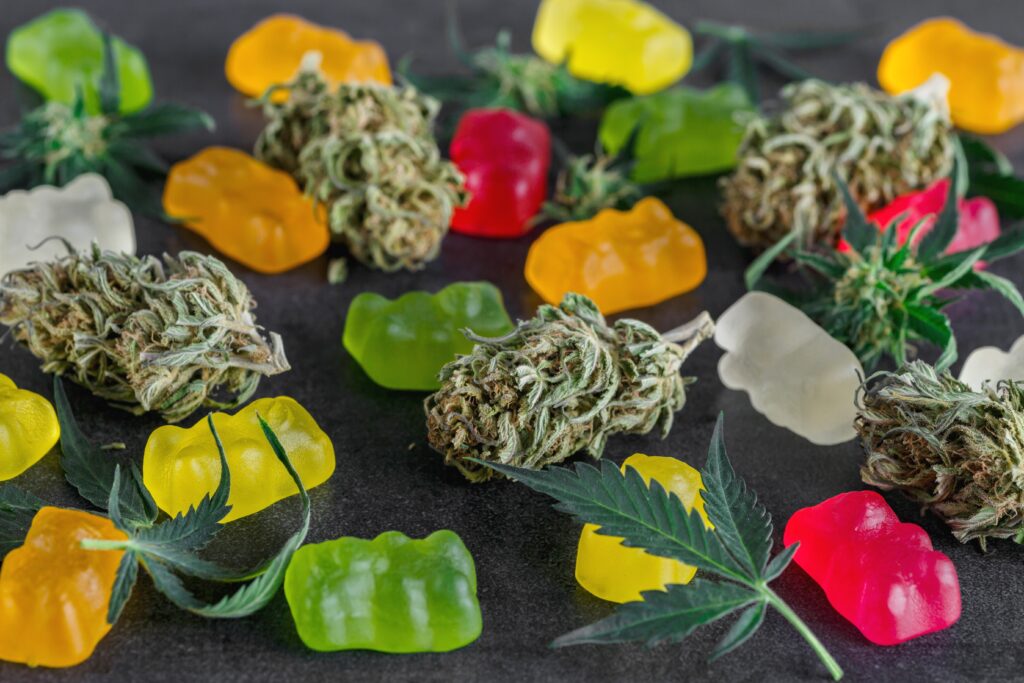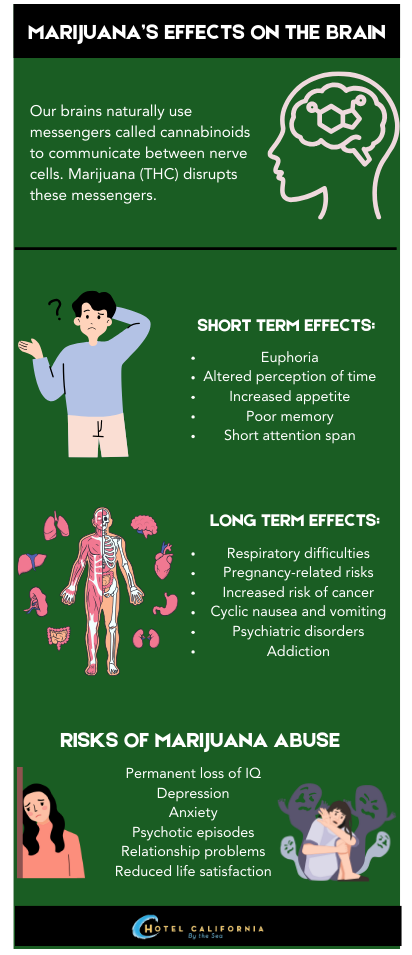The popularity of Cannabis Gummies
Cannabis, marijuana or weed is one of the most commonly used psychoactive substances. The three names are often used interchangeably to describe the psychoactive chemical compound that affects the mind and body when consumed. It refers to all products that are derived from the cannabis sativa plant, which contains an estimated 540 different types of cannabinoids or chemical compound structures.

In 1996, California became the first state to legalize medical use of cannabis. And by April 2016, 24 other states including the District of Columbia legalized medical cannabis use along with four states legalizing recreational use. The biggest difference between medical and recreational cannabis is regulation of the products and taxation of the products. Some states regulate only specific portions of the cannabis industry. There are no federal regulations regarding cannabis. Because of this, it can be tricky for consumers because they are not always aware of what they may be purchasing and ingesting.
Today the psychedelic substance is one of the most popular worldwide. The two most popular compounds are tetrahydrocannabinol (THC) and cannabidiol (CBD). THC and CBD are different types of cannabinoids. THC is a cannabinoid that produces feelings of euphoria or an intoxicated high. CBD can produce feelings of relaxation without the psychoactive and intoxicating component. And a popular method of consumption of these chemicals is through what are known as edibles.
What are Edibles?
Edibles are food products that are infused with cannabis extracts such as candy, gummies, chocolate, lozenges, beverages and baked goods. It is popular, especially in places where recreational use is legal. The nutritional content and ingredient labels of edible products will vary across each state. For example, Colorado requires products to have nutrition labels similar to food and drink labels listing contents such as calories and fat percentage. In Washington state, products are only required to have an ingredient list.
Edibles that contain THC or CBD can be found in baked goods, candy such as gummies, and even in drinks. Because terms such as cannabis and marijuana are used so interchangeably, it is important to read the labels of products before consuming them because they may have different levels or concentrations of THC or CBD.
In general, edible products are considered “safe”. However, there is still very limited research and studies on how ingestion of cannabis compounds differs from other methods of cannabis administration. These studies would look into its therapeutic efficacy, the side effects and the safety of consuming cannabis compounds.

The popularity of Cannabis Gummies
Edibles come in all kinds of products. One of the most popular products is gummies and candy. They are discreet, easy to consume, convenient, effective and let’s be honest, a much tastier way to consume cannabis compounds. There are CBD gummies as well as THC gummies. It is also considered a safer way of consuming cannabis because it doesn’t expose a person to the harmful side effects of traditional smoking and inhaling.
CBD gummies are often taken to calm nerves, and anxiety and typically contain small amounts of hemp oils with high concentrations of CBD. THC gummies contain amounts of THC that can produce the psychedelic effects recreational users often seek. Both types of edibles are often used to self-medicate and manage various types of mental health conditions.
Lozenges, gum and lollipop-infused edibles produce quicker onset of effect because the chemical is absorbed sublingually. It is absorbed through the mucus membrane. They are technically ingested and not actually swallowed where it needs to go through the digestive system first. Cannabis gummies and cannabis-backed goods are examples of products that are swallowed and delivered through the stomach and liver before hitting the bloodstream.
With cannabis gummies, the peak level of psychoactive effects occurs around 3 hours. A single gummy will typically contain up to 10mg of THC.
Check Your Insurance Coverage for FREE
Find out if your insurance covers addiction treatment in minutes. We accept most insurance!
Cannabis Edibles vs Smoking Cannabis
Cannabis does have the potential for developing a tolerance. However, THC tolerance is different between smoking and orally ingesting. Because edibles produce more intense side effects, developing tolerance and addiction to cannabis is more likely to occur when taken orally. A 2015 report commissioned by the Colorado Department of Revenue found that the behavioral effects of eating 1mg of THC are compatible with smoking about 5.71mg of THC.
Cannabis Edibles
- More discreet way to consume cannabis products
- Edibles offer a high that is calmer and more relaxing compared to smoking
- Edibles avoid the harmful toxins and other chemicals that can be ingested when smoking
- Edibles can take longer for the body to absorb the THC or CBD compounds so the onset of effects is delayed
- The effects of edibles can last for up to 12 hours with residual effects lasting up to 24 hours
- The effects of edible cannabis gummies can be felt between 30 minutes to an hour and will peak at around 4 hours
- Edibles need to pass through the stomach and liver before entering into the bloodstream and the brain
- Edibles can offer a more intense high due to it passing through the liver, which converts the THC into a stronger chemical
Smoking Cannabis
- When smoking cannabis, it enters the bloodstream and crosses the blood-brain barrier more quickly
- The onset of effects from smoking and inhaling is about 5-10 minutes and can stay active for about 2-4 hours.
- Smoking and inhaling cannabis can put a user at higher risk of inhaling other toxic chemicals
- Users who smoke cannabis are at higher risk for damage to the throat, lungs, mouth and nostrils.
Side Effects of Marijuana Abuse
- Liver damage
- Mood changes and agitation
- Drowsiness
GI issues
- Can cause further anxiety and worsening depression
- Psychosis
- Panic and paranoia
- Nausea and vomiting
- Cardiovascular conditions
- Cognitive impairment
- Motor skill impairment
- Extreme sedation
- Hallucinations and delusions
Reach out to Hotel California by the Sea
We specialize in treating addiction and other co-occurring disorders, such as PTSD. Our Admissions specialists are available to walk you through the best options for treating your addiction.
Treatment for Marijuana Addiction
Cannabis-infused gummies and candies have become more and more popular among recreational users. It makes it easier to ingest in order to produce the psychedelic effects. With edible marijuana-infused food products, users are exposed to a more intense high and can develop a higher tolerance for the substance compared to smoking the drug. This can lead to the development of an addiction. Hotel California by the Sea provides treatment for people who have become dependent and addicted to psychoactive drugs such as cannabis.
Users who have reached doses of 20-30mg of THC per day are often associated with having a dependency on the drug and experiencing negative side effects. An addiction to marijuana can also be exacerbated by the fact that edibles are mostly unregulated and can easily be obtained.
We offer all levels of care including detox, residential and outpatient programs. We utilize evidence-based treatment methods such as CBT, DBT and family therapy to help clients get to the root cause of their addiction. In many cases, it can be caused by co-occurring mental health conditions such as PTSD, anxiety or depression. When this occurs it can also cause clients to take multiple substances at the same time. For example, alcohol and cannabis are a common combination of drug use among people of all ages. At Hotel California by the Sea, we provide the tools, resources and support clients will need to overcome their addiction.
References:
https://www.ccsa.ca/sites/default/files/2019-06/CCSA-7-Things-About-Edible-Cannabis-2019-en.pdf
https://www.jeffersonhealth.org/your-health/living-well/edible-marijuana-is-it-safe-to-use
https://www.ncbi.nlm.nih.gov/pmc/articles/PMC5260817
https://www.medicalnewstoday.com/articles/negative-side-effects-of-cbd-gummies
https://www.healthline.com/health/how-long-do-edibles-take-to-kick-in
https://www.sciencenews.org/article/marijuana-cannabis-edibles-health-issues
